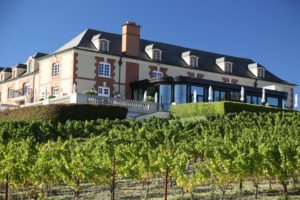
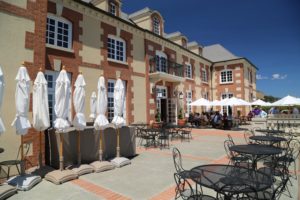
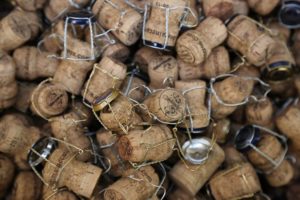 Domaine Carneros is a winery that one won’t easily miss seeing while driving through the Carneros region of Napa Valley. The winery looks very European and is perched high on a hill, so it is easily seen from the well-traveled Highway 12. As a result, weekends combined with good weather can make for a very busy tasting experience. We have visited many times; Domaine Carneros is always very popular with well dressed, beautiful & sophisticated looking young professionals. There are only four primary sparkling wineries in all of Napa Valley; a stop here either in the morning or at the end of a day of tasting is always a good idea. The reason for this is twofold; it’s location in the far southern part of the valley lends itself well for an early or late stop (a late stop, especially for those staying in either the towns of Napa or Sonoma or heading back to the San Jose Bay Area) – and in our opinion, sparkling wine is either best enjoyed in the early morning or after a day of still wine tasting. And Domaine Carneros is conveniently located only a 10–15-minute drive from downtown Napa and about the same distance from the town of Sonoma.
Domaine Carneros is a winery that one won’t easily miss seeing while driving through the Carneros region of Napa Valley. The winery looks very European and is perched high on a hill, so it is easily seen from the well-traveled Highway 12. As a result, weekends combined with good weather can make for a very busy tasting experience. We have visited many times; Domaine Carneros is always very popular with well dressed, beautiful & sophisticated looking young professionals. There are only four primary sparkling wineries in all of Napa Valley; a stop here either in the morning or at the end of a day of tasting is always a good idea. The reason for this is twofold; it’s location in the far southern part of the valley lends itself well for an early or late stop (a late stop, especially for those staying in either the towns of Napa or Sonoma or heading back to the San Jose Bay Area) – and in our opinion, sparkling wine is either best enjoyed in the early morning or after a day of still wine tasting. And Domaine Carneros is conveniently located only a 10–15-minute drive from downtown Napa and about the same distance from the town of Sonoma.
While their first vintage was a 1987 Brut, the winery and hospitality center was completed in 1989 but looks like it has been here much longer. It exudes old world charm as it was modeled after the historic Château de la Marquetterie, located in the village of Pierry, about a 10-minute drive directly south of the center of Épernay in Champagne (see our notes and photographs of this magnificent old building below). The construction of this handsome building was overseen by Santa Rosa based contractors, Wright Contracting who have worked on numerous significant high-profile properties in Napa and Sonoma including hospitals, schools and wineries. A select number of winery and hospitality projects they have been involved with in Napa Valley include: Bouchaine, Cakebread, Chateau Montelena, Colgin, Dominus, Freemark Abbey, Mumm, Opus One and the French Laundry and Meadowood.
As you may have guessed by now, this winery has a connection to France; it is 50% owned by Taittinger, a French company who operates Champagne Taittinger in Reims, France. In their search for another location to make sparkling wine beginning in the late 1970s, Taittinger identified several premium sites around the world for growing Chardonnay and Pinot Noir – the two essential varietals for making sparkling wine. The Carneros region was one of those sites and Taittinger purchased this property in 1987.
And the other owner is the Kopf family who runs the successful Kobrand Wines & Spirits based in New York and also owns Napa Valley based Sequoia Grove Winery and Sonoma County based, St. Francis Winery. Kobrand Corporation was founded in 1944 by Rudolph C. Kopf with their first office headquartered in the Empire State Building in New York City. Mr. Kopf had previously founded (1933) and run the wine & spirits department at Macy’s wine and liquor in New York City (Macy’s Herald Square).
The relationship between Taittinger and Kobrand dates back to 1946.
Domaine Carneros founding winemaker Eileen Crane began her career in Napa Valley as a tour guide at what is now CHANDON California; she remained at Domain Carneros for the duration of her career. She worked at several Napa and Sonoma sparkling wine producers beginning in 1978 and retired in 2020, although she assisted with some blending during 2021. Her focus while at Domain Carneros was on creating a premium consistent product each year. Another winemaker is responsible for all of their still wines.
All of their wine comes from vineyards in the Carneros sub appellation – with 95% of the grapes coming from their own estate vineyards spread across six separate vineyards encompassing some 400 acres of which approximately 250 acres are planted to Pinot Noir and 150 acres to Chardonnay. This is very important to note as they have full control over their farming and harvest decisions. They also farm small blocks of Pinot Gris and Pinot Blanc, but do not grow Pinot Meunier. Their vineyards are located on both the Napa and Sonoma sides of Carneros and all within several miles of the winery. And they work with 20 clones of Pinot Noir and 18 clones of Chardonnay. The grapes are always harvested by hand at night and are generally picked between 18 and 20 brix resulting in pH’s of between 2.90 and 3.20.
Hospitality
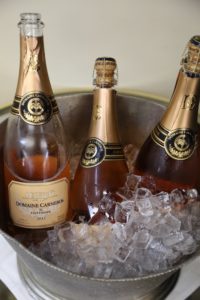
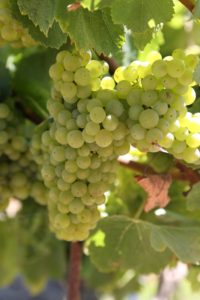 Visitors will walk up a series of lengthy steps past Pinot Noir vines growing to your right and Chardonnay vines to your left; this grand entrance is a popular place for selfies. Short walkways lead to the vines where one can examine the grapes in closer detail (August and early September are ideal times to take closeup “facies” with grape clusters as your backdrop). Walk up the steps until you reach the entrance, proceed inside and check in with a host. Weather permitting and if seats are available, the outdoor tables are where you want to be – to be seen and to see. These tables tend to fill up rather quickly, especially on warm spring through fall weekends.
Visitors will walk up a series of lengthy steps past Pinot Noir vines growing to your right and Chardonnay vines to your left; this grand entrance is a popular place for selfies. Short walkways lead to the vines where one can examine the grapes in closer detail (August and early September are ideal times to take closeup “facies” with grape clusters as your backdrop). Walk up the steps until you reach the entrance, proceed inside and check in with a host. Weather permitting and if seats are available, the outdoor tables are where you want to be – to be seen and to see. These tables tend to fill up rather quickly, especially on warm spring through fall weekends.
Domaine Carneros has offered a variety of tasting experiences over the years, and these continue to evolve. As of our latest update several special tastings worth noting include a food and wine pairing, a caviar and wine experience and a unique wine sabering experience which involves slicing open a bottling using a sharp sword called a saber, typically used for ceremonial occasions.
In 2018 Domaine Carneros opened a garden conservatory called the Jardin d’Hiver; this enclosed mostly glass room is used for five-course food pairings and select tastings. It faces north overlooking one of their terraces. It was modeled after some of the glass buildings that Gustave Eiffel created in the mid to late 1800s on the Place de la Concorde in Paris. A fireplace helps keep one warm here in the winter.
After years of hosting visitors by walk-in, in 2019 Domain Carneros started only seeing visitors only by prior reservation although conceivably last minute or same day reservations can be made on days when they are not too busy (generally weekdays). A typical tasting lasts about 60 minutes although more in-depth tastings can last up to 90 minutes. Unlike most Napa Valley wineries, Domaine Carneros offers table service with foods focusing primarily on charcuterie & cheeses.
Because of the wineries’ location, uniqueness of being one of only several premium sparkling wine producers in Napa Valley, lengthy history in France, and the memorable appearance of the building, Domaine Carneros hosts more people than most area wineries. Because of its elevated height over the Carneros region, there are excellent views of the Carneros hills. The reserve tasting room is located downstairs and the main tasting space is located in the room to the right of the entrance. Not all wineries have as many tables’ setup for wine enjoyment as this one. One comes here for their sparkling wine; our recommendation is to choose their sparkling tasting flight rather than the still wine flight – since this is the wine style, they are most known for – although they do produce quite a few different Pinot Noirs and Chardonnays.
The Art Deco inspired lounge Salon Des Rêves opened in 2024 and overlooks part of their production facility and is located below the main foyer. The tasting here is the Plats de Perles, an oyster and sparkling wine experience lasting about 90 minutes.
Select Wines
The Domaine Carneros sparkling wines are primarily vintage dated and are all made in the traditional style (méthode champenoise). Their focus is on producing elegant and refreshing wines, showcasing their vineyards’ bright acidity and minerally characteristics. As a result, no oak is used for their sparkling wines, malolactic fermentation is kept to a minimum, and extraction is low.
Sparkling
The 2020 Domaine Carneros Brut Rosé is a blend of 57% Estate Grown Pinot Noir and 43% Estate Grown Chardonnay. This wine medium copper in color; the bouquet offers delicate red fruits including of raspberry, currant, white strawberry and citrus influences including orange blossom, kaffir lime zest and ruby grapefruit. Minerally. On the palate there are flavors of cucumber infused water, raspberry, white strawberries, kumquat and tangerine. Mouth watering and zesty, this is a ‘wake up wine’ due to its high acidity. A solid pairing would be with raw oysters, Hog Island please. This wine used to be created by blending in red wine for color; Eileen experimented with making a true rose and was pleased with the results. So now color comes from typically 3-5 days of skin contact from the Pinot Noir.
The 2019 Domaine Carneros Verméil Demi-Sec is medium yellow in color; the bouquet offers aromas of Granny Smith apple, honeydew melon, honeycomb, quince, white peaches and nectarines and white toast. This wine reveals flavors of apple, pear, quince, honeycomb, mandarin orange and ginger. While perceptibly slightly sweet, the brightness of acidy and flavors far outshine the sweetness especially on the rich finish. Serve on a warm summer day, poolside with a plate of fresh fruit and a variety of lightly flavored cheeses. The word Verméil refers to plating a thin layer of gold on sterling silver and in the case of this bottling, refers to the layer of dosage added to the Brut Cuvee.
The 2018 Domain Carneros Blanc de Noir is a white sparkling wine made from 100% varietal Pinot Noir and was aged three years in bottle. This wine is pale yellow in color; the bouquet smells fresh and offers aromas of ripe pear, Golden Delicious apple, cooked Golden quince and recently toasted bread. Refreshing and lively across the palate, this bottling offers flavors of tart apple, kiwi, lemon, honeycomb and toast complemented by a light and airy mousse and a lingering tartness. This beautiful bottling is exclusively sold at the winery. Pair this with most anything or enjoy it’s refreshing qualities by itself.
The 2019 Domaine Carneros Ultra Brut is a blend of 60% estate grown Chardonnay and 40% estate grown Pinot Noir. This wine is medium gold; the bouquet is lively and fresh with aromas of apple, pear, light minerally characteristics, a hint of vanilla and ripe cantaloupe. Spirited, fresh and bright, the mouth-watering palate features flavors of Golden delicious apples and kiwi. Its creaminess is countered nicely by its lively and refreshing acidity. The finish immediately asks for another sip. This is their driest sparkling wine with typically 4 to 4.5 g/liter of residual sugar; this is a blend of Chardonnay and Pinot and their primary cuvee.
The 2019 Domaine Carneros Estate Brut Cuvée is deep gold in color; the lively and layered bouquet offers tangy scents of green apple, a lemon zest, honeycomb, kumquat, starfruit, pineapple and assorted orchard fruits. Intensely flavored the palate offers notes of honeycomb, red delicious apple, Golden kiwi and mandarin orange. This finish is richly endowed and supported by a bracing acidity. Delicious. This wine is aged a minimum of 5 years.
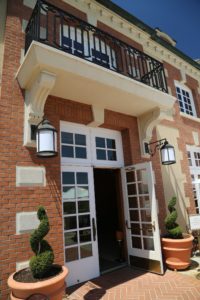 The 2017 Domaine Carneros Brut Late Disgorged is a blend of 52% estate grown Pinot Noir and 48% estate grown Chardonnay. This wine is deep gold in color; the bouquet sports honeyed aromas including beeswax, apple pie, a note of caramel, toffee and Golden delicious apple. And there are some white florals including peach blossom and honeycomb. The palate is citrusy along with diversity of apple flavors, ginger and honeydew melon. The finish is mouth watering with a persistent brightness from the energetic acidity. This wine is drinking very well and we might add still highly youthful at this age, 7 years post vintage at the time of our tasting.
The 2017 Domaine Carneros Brut Late Disgorged is a blend of 52% estate grown Pinot Noir and 48% estate grown Chardonnay. This wine is deep gold in color; the bouquet sports honeyed aromas including beeswax, apple pie, a note of caramel, toffee and Golden delicious apple. And there are some white florals including peach blossom and honeycomb. The palate is citrusy along with diversity of apple flavors, ginger and honeydew melon. The finish is mouth watering with a persistent brightness from the energetic acidity. This wine is drinking very well and we might add still highly youthful at this age, 7 years post vintage at the time of our tasting.
One of our favorite Domain Carneros sparkling wines is the Le Rêve Blanc de Blancs. This wine is aged longer than most of their other current vintage bottlings – typically 6 or 7 years. It is a blend of several different Chardonnay clones, each of which brings a unique characteristic to this wine. The name in French means “the dream” and was created to be the answer to their French high-end counterpart but in this case using only estate grown fruit. When we mentioned this was our favorite, our guide’s response was “good taste is both a blessing and a curse”! Right, this is among their most pricey selections.
The 2016 Domaine Carneros Le Rêve Blanc de Blancs tête de cuvée (100% varietal Chardonnay) is medium gold in color; the bouquet smells fresh with aromas of citrus blossom, grapefruit pith, apricot, nectarine, white peach, candied ginger, canned pear in light syrup and a light note of toasted almonds. Fresh, fruity, youthful, elegant and tangy, on the palate there are flavors of Golden delicious apples, pear, lemon meringue and ruby grapefruit. The finish is bright and zippy and begs another sip. For reference, we tasted this wine 8 years post vintage.
Still
Still Pinot Noir began as an experiment at Domaine Carneros with a production of just a few barrels. Today it comprises about 15% of their total wine production and is made at a separate winery within Domaine Carneros. When Claude Tattinger spotted the barrels he inquired as to their use. Delighted with the resulting wine, he brought bottles of this wine to Hotel Crillon in Paris where it was served in the late 1990s and early 2000s.
The 2021 Domaine Carneros Avant Garde Pinot Noir is pale ruby in color; this bouquet is clearly about the fruit rather than influence from spices that often this variety exhibits. It offers scents of raspberries, red vine licorice, rose petals, dark cherries and pomegranate – this latter aromatic reminded us of every fall harvesting pomegranates from a friends backyard and the resulting smells and juice that invariably dribbles out when we crack them open. This wine reveals flavors of red cherries, raspberries and other red berries. And where the bouquet lacks in spice notes, the palate picks up some including a very light drying savory spice note which persists on the finish. The tannins are so integrated they are barely felt; this easy-drinking wine lingers with a soft and supple texture. Grapes for this bottling were sourced from all six of the Domaine Carneros owned vineyards. This vintage was aged for 9 months in French oak barrels of which 20% were new.
The 2021 Domaine Carneros Estate Pinot Noir is medium ruby in color; the bouquet offers an immediate all spice attribute with additional scents of clove accompanied by red plum, currant, cranberry and dried herbs including sage, crushed peppercorn. Some of the baking spice characteristics are mirrored on the palate including of clove, cinnamon stick, red cherry, currant, raspberry and cranberry with some savory notes especially noticeable on the finish. These final flavors include sage and assorted other dried herbs. A lightly perceived sweetness of fruit is perhaps from its barrel aging. The tannins are seamlessly integrated into the finish; their texture is rounded and lightly creamy. Or silky, like running one’s hands across a thick cashmere sweater. This wine was aged for 10 months in 100% French oak barrels of which 33% were new.
Tour
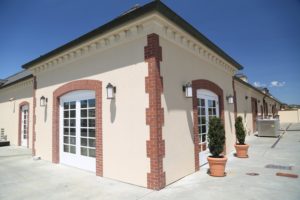
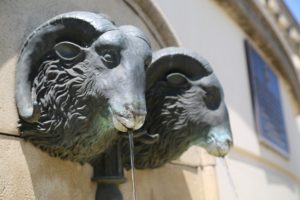
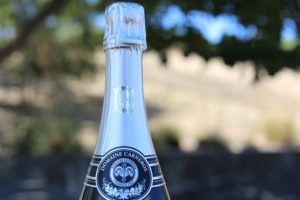 Domaine Carneros currently offers a tour of the winery for members only. The flagship tour is offered daily year-round and offers a general overview of their vineyards, property and basic information about the process of producing sparkling wines. In addition, seasonal summer tours are also offered usually in regard to their still wines. The general tour takes about an hour.
Domaine Carneros currently offers a tour of the winery for members only. The flagship tour is offered daily year-round and offers a general overview of their vineyards, property and basic information about the process of producing sparkling wines. In addition, seasonal summer tours are also offered usually in regard to their still wines. The general tour takes about an hour.
The tour starts in the reception room and then spends some time next to some of the vines planted around the winery. This is a good time for viticulture questions. Then you walk up to their “media” room for a glass of sparkling and short video about Taittinger and Domaine Carneros. At the end of the video the screen moves up and guests are staring through a glass window at large steel tanks. Watching employees walk by some of whom wave at you is like looking at fish in a tank.
Next, visitors will proceed to a windowed area which looks down on their large aging rooms, bottling line, and the automatic riddler machines. A few antique wine making pieces of equipment are located here as well as a display on how riddling works. We were told in the early days of bottling sparkling wines – the amount of volume in each bottle was imprecise due to rudimentary filling methods. Enter foil; long foils were creatively introduced when bottling sparkling wines to hide the differences in volume in each bottle!
Guests will finish the tour in the Reserve room for a sit down tasting of their still wines (several different Pinot Noirs). We’ve been on several tours; the guides are there to answer questions but also have a good time with their guests. During one of our visits, our tour guide told the story of a Japanese distributor who wanted to buy 5 cases for his daughter’s wedding. Domaine Carneros doesn’t do much international shipping, so they were trying to figure out how to get these bottlings to the man ASAP. It turned out his daughter was only 2 years old, and he was trying to make a point that yes, Domaine Carneros’s sparkling wine will age!
—
As a side note, they have one of the larger photo-voltaic systems of any winery in the world located towards the back of the winery. And they are certified CCOF (since 2007) which means all their estate vineyards are farmed organically.
Domaine Carneros is certified Fish Friendly farming, Napa Green and California Certified Sustainable. Total production varies between 75,000 and 80,000 cases annually. Special events are offered at select times throughout the year including with winemaker. For more information, to schedule a visit and or to join one of their wine clubs called the Chateau Society (as of the latest update to this review they offer 6 membership options), visit: www.domainecarneros.com
Exterior
Interior
Jardin d’Hiver
Winery
Champagne Taittinger, Reims France
One of the most historic Champagne houses, Taittinger was founded in 1734 by Jacques Fourneaux and is the fourth oldest winery operating in Champagne behind Gosset (1584), Ruinart (1729) and Chanoine Frères (1730). It is also the third largest producer in Champagne behind Moet Chandon and Veuve Clicquot. In the early 1900s the Taittinger family, Pierre Taittinger and his brother-in-law operated a Champagne distribution company. The modern-day beginnings of Taittinger are from 1931 when Pierre took over the operations of what was called at that time, Forest-Fourneaux. And several years later Pierre purchased Château de la Marquetterie and its accompanying estate. Eventually the Taittinger family took over ownership of the site of what used to be the Saint Nicaise Abbey (their present-day headquarters).
The history of this site is overwhelming. Saint-Nicaise, the bishop of Reims was killed in the 5th century and was buried here. In 1229 an abbey was built by the Benedictine monks over Saint-Nicaise’s gravesite and to house his relics. The abbey was sold during the French Revolution (1789 to 1799) and over time was dismantled for its stone until by the 1800s it was completely destroyed. Much later during World War I the caves were used to house soldiers and refugees; signature etchings and dates carved into the chalk walls from soldiers during World War I can still be seen.
The history of the site extends even further; the existing caves originated as a chalk quarry/pits (called crayères in French) by the Gallo-Romans in the 4th century, with hand cut blocks of chalk stone used for buildings. Some 900 years later, the Benedictine Monks expanded the quarry into caves used for aging their own wines. Since 2015 the cellars have been UNESCO listed.
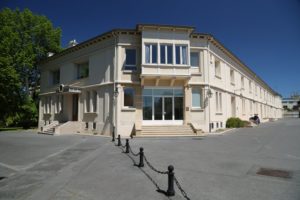 Champagne Taittinger was sold for about a year between 2005 and 2006 to the private USA based investment firm Starwood Capital Group. But by mid 2006 the Taittinger family purchased Champagne Taittinger back. Today the business is family owned and operated led by president Vitalie Taittinger. The winery owns 288 hectares of vineyards which comprises about 50% of their total annual production with the remainder of grapes purchased from local growers. Their 37 different vineyards are planted to 37% Chardonnay, 48% Pinot Noir and 15% Pinot Meunier.
Champagne Taittinger was sold for about a year between 2005 and 2006 to the private USA based investment firm Starwood Capital Group. But by mid 2006 the Taittinger family purchased Champagne Taittinger back. Today the business is family owned and operated led by president Vitalie Taittinger. The winery owns 288 hectares of vineyards which comprises about 50% of their total annual production with the remainder of grapes purchased from local growers. Their 37 different vineyards are planted to 37% Chardonnay, 48% Pinot Noir and 15% Pinot Meunier.
Tours by appointment are led by knowledgeable hosts and include a brief sit down viewing of an inspirational video about their operations followed by visit into the historic underground cellars with approximately 4km of tunnels storing some 2 million bottles at any one time. The family also operates several other offsite production and or storage facilities including one which stores up to 25 million bottles. Like the other caves in the region, the temperature is constant. Highlights include seeing some of the original construction by the monks in the 13th century including steps leading up to where the abbey was located at that time.
And the host will provide a brief overview about the process of making Champagne including information about primary fermentation, the riddling process and dosage. All dosage used in their wines is locally produced from beet roots. Following a visit to the cave, guests will ascend upstairs to an elegant tasting salon to try several of their wines.
Taittinger opened a newly renovated visitor center and boutique in October 2024. We visited Champagne again in November 2024 specifically to see this space. In 2025 an adjoining space was converted into the Polychrome Restaurant, taking its first reservations on June 14, 2025. Polychromy refers to harmony of colors, textures and influences. Each year a new chef oversees their culinary program. The restaurant is open for lunch inlcuding three and four course menus. And they are also open for afternoon tea with the Taittinger wines available by the glass. We plan to stop by again sometime in 2025 or 2026 to eat here and update our notes and photography accordingly.
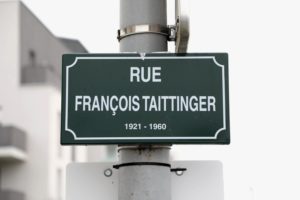
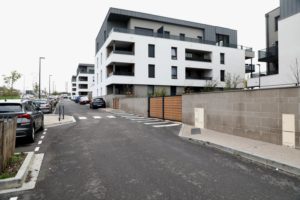 Besides enjoying the wine in the tasting salon (or an adjoining room for premium tastings), guests can view the ‘gallery’ of various Taittinger bottlings within the salon. After finishing with the tasting, guests will exit into the small boutique which sells Taittinger wines but also a number of other items including pottery, stemware, books, handbags and other accessories. Note the beautiful stained glass piece of art hanging from the ceiling; this was made by a local artist, a friend of the Taittinger family.
Besides enjoying the wine in the tasting salon (or an adjoining room for premium tastings), guests can view the ‘gallery’ of various Taittinger bottlings within the salon. After finishing with the tasting, guests will exit into the small boutique which sells Taittinger wines but also a number of other items including pottery, stemware, books, handbags and other accessories. Note the beautiful stained glass piece of art hanging from the ceiling; this was made by a local artist, a friend of the Taittinger family.
A book dedicated to founder Pierre’s son Michael Taittinger is also for sale written by his brother Claude. Michael died in 1940 on his 20th birthday during World War II. And one of Pierre’s other sons, François managed the company from 1945 until his untimely death in 1960 from an automobile accident involving runaway horses, one of which was hit and fell on the roof of the car which then swerved and crashed into a tree. Rue François Taittinger in Reims is named in his honor. Several open spaces and old apartment buildings, also in Reims are named in homage to Pierre Taittinger (Esplanade and Cour Pierre Taittinger).
Deceased Taittinger family members are housed in the Taittinger family plot in the historic Cimetière du Nord de Reims. During our visit to the cemetery we had no information about the location of the family plot. I randomly met another American couple, living in Italy but who enjoy visiting cemeteries during their travels. We were on our phone frantically searching for its whereabouts; remarkably the woman was about to also look for the Taittinger grave locations as Taittinger is her favorite Champagne. Not able to find what we were looking for online, we parted ways, bumped into each other again and agreed we would notify each other if we discovered the family plot.
This cemetery is large and it was late in the day. I didn’t have much time left. Rounding one of the alleyways, I spotted ‘Famille Taittinger’ and quickly recognized the family names etched into the side of the stone. It was cloudy all day, but as soon as I spotted this the sun came out. I called them over and we celebrated our find. They left and I lingered for another 10 minutes. I heard the cork of a bottle of Champagne being opened from one side of the cemetery. I looked over; there was absolutely no one around. The sun quickly became hidden by the clouds and didn’t come out for the rest of the day. I reluctantly left the grave and wandered out of this beautiful soul filled place.
For more information or to make an appointment to see the caves followed by a tasting, visit: www.taittinger.com
Like some other Champagne producers, Taittinger has international interests including Domaine Carneros of course but also more recently vineyards in southern England through a joint partnership with Hatch Mansfield Ltd (a UK based wine distribution company). See our notes and photography below for more details.
exterior
interior, cave
interior, salon + boutique
Famille Taittinger, Cimetière du Nord de Reims
reims
Esplanade Pierre Taittinger
Taittinger Warehouse, Reims
Château de la Marquetterie
This stately and historic chateau sits on the edge of a hillside overlooking part of the tiny village of Pierry, a less than a 10-minute drive from Épernay. This home was the direct visual inspiration for Domaine Carneros (compare our photographs to see the similarities).
It was home to fiction writer Jacques Cazotte from 1760 until sometime during the French Revolution (1789-1799). Cazotte was most known for his work: Le Diable amoureux. A number of well-known French authors would join annual festivities during harvest during Cazotte’s ownership including Voltaire.
Its connection to the Taittinger family began during World War I when Pierre-Charles Taittinger joined Marshal Joseph Joffre who used the chateau as a command center and headquarters. Joffre was most known for leading his troops to victory over the Germans in the First Battle of the Marne in September 1914.
Pierre-Charles purchased Château La Marquetterie in 1934 and it has been under the Taittinger family ownership ever since.
Comtes de Champagne
This significantly restored medieval building (was almost destroyed in WWII) is located in central Reims, a short walk from the Cathedrale Notre-Dame de Reims. It dates from the 1300s and used to contain shops and was used for hosting banquets and celebrations relating to the coronation of various French kings. It is owned by Taittinger and is used as a private event space including hosting private concerts. Two primary rooms are within the building, one on the ground floor and one on the first floor; each can accommodate up to 150 people.
And while their primary cellar was closed for renovation during 2023 and until summer 2024, Comtes de Champagne used this space to host visitors for the first time in its history. Guests were received at the lower level and then accompanied up stairs for the group tastings in an formal and elegant room. 13th century music accompanied each of the tastings.
The Taittinger Non Vintage Brut Reserve Champagne was produced with three varieties including Chardonnay, Pinot Noir and Pinot Meunier. This wine is medium straw in color; the bouquet offers aromas of red apple, white nectarine and some citrus nots. The palate is crisp and refreshing from the start to the finish. It sports flavors of citrus including pomelo and grapefruit, green apple and a light note of kumquat. The minimum requirement for aging wines from Champagne is 15 months. This wine was aged for 3 years before it was released. This wine comprises approximately 80% of their total production; it was first produced in 1940.
The Taittinger Prestige Rosé Non Vintage is a blend of 50% Pinot Noir (15% of this variety was blended into this wine for color), 30% Chardonnay and 20% Pinot Meunier. The bouquet offers aromas of strawberry, raspberry, rose petals, a sorbet like scent and cranberry. The palate reveals flavors of red berries including raspberry and cranberry along with ruby red grapefruit. Its fruity yet bright with a crisp refreshing acidity. We could see pairing this with duck or a slightly sweet dessert.
The most premium of the Taittinger bottlings is the Comtes de Champagne, always made with 100% Chardonnay grapes from Grands Crus of the Côte des Blancs region. The first vintage of this wine was in 1952; historically it is only produced about one of every three years.
La Belle Enchantée, Reims
This Art Nouveau mansion in the center of Reims at 44 Boulevard Lundy is scheduled to open sometime in 2025. Named, La Belle Enchantée this space will be used to showcase music, culinary and arts and heritage including on site events. The mansion is tied into Taittinger’s Philanthropic ArsNova program (launched in late 2023) bringing music, culinary, arts and heritage to those who may not otherwise have access. Part of this charitable organizations support includes for culinary classrooms, for artists including stained-glass windows, statues and fountains and working closely with the Paris Opéra and creating studios for various musicians.
Taittinger has owned this property since the 1950s.
ArsNova also includes the Taittinger International Culinary Prize and two additional prizes for music and arts and heritage.
We will visit and update our notes and photography here sometime in 2025 or 2026.
Domaine Evremond, England
The vineyards for Domaine Evremond are located about a 90-minute drive with no traffic, southeast of central London or a 20-minute drive from Canterbury. The winery and vineyards are in Kent, known for being among the sunniest counties in the country and also known as, “The Garden of England”. With blurred vision or a little creative liberty, the outline of the county of Kent roughly resembles that of the outline of the U.S. This is very rural and agricultural England countryside, with narrow roads often bordered by hedgerows and dirt or gravel roads leading into farms or orchards. The winery is located less than 5 minutes from the charming and historical little village of Chilham containing the its medieval village square, Chilham Castle and St. Mary’s Church (dates to 1086).
In 2015 after about an 18 month search for property, focusing on southern England, Pierre Taittinger in partnership with Patrick McGrath MW, the chairman of Ascot, United Kingdom based Hatch Mansfield Ltd., purchased 90 hectares (previously known as Stone Sile Farm) from one of the UK’s largest growers of apples, Mark Gaskain. Today Domaine Evremond’s holdings are 125 hectares with 60 planted to grapevines. Hatch Mansfield was established in 1994; their primary business is as an agent and wine broker for select premium family-owned wineries and producers. They began working with Taittinger in 1998 and then Domaine Carneros the following year.
With an appreciation for history and tying in both France and the U.K. Domaine Evremond was named in homage of Charles de Saint-Evremond (1614-1703). Evremond was from France, a poet and an ambassador for Champagne in part helping promote its wine in the U.K. And this Frenchman is buried in London – in the poets’ corner of Westminster Abbey and his portrait hangs in the National Portrait Gallery, also in London.
The Taittinger’s were already familiar with this part of England prior to their purchase. One of the family members, Jean Taittinger was mayor of Reims from 1959 through 1977 and during his time in office he oversaw the twinning of Reims with Canterbury. For clarification, a twinned city in the UK is similar to a sister city or friendly city in the U.S and it’s a very common occurrence to see signs in even small towns or villages listing the twinned name of some other town.
The property features chalky, low nutrient and well-draining soils with plenty of flint rock; both contribute a certain minerality to the wines. A number of flint rocks collected from the property are displayed outdoors in shallow troughs near the main entrance to the hospitality center and next to the Lebanon Cedar tables. The maximum elevation of the property is approximately 80 meters ASL. While frost can occur during inopportune times of the year, it generally only affects a small percentage of the vineyard, and is infrequent.
Historically this region was well known for growing hops; Oust houses, originally used for drying hops are still standing. Today in addition to wine grapes, the land is also planted to apple and pear orchards. The first grapevines were planted in 2017; as a result, Taittinger was the first Champagne ‘house’ to plant grapes in the United Kingdom. Plantings included Chardonnay, Pinot Meunier and Pinot Noir. In 2023 Domaine Evremond aquired an additional acres locted about three miles from the winery known as Featherbed Lane on Hogbens Hill. And additional 10 hectares of Chardonnay were planted here in May 2024. Chardonnay is purposefully growing on the most chalkiest of the soils. Currently the estate is planted to 45% Chardonnay, 45% Pinot Noir and 10% Pinot Meunier.
This is a maritime climate with their property located as the crow flies, less than 15km from the sea; the number one concern of growing grapes here is moisture. The focus is on preventative viticulture rather than reactive viticulture. The vines are grown in such a way to maximize air flow and sun exposure, both based on where they are planted on the property (hillsides), row direction, height of the vines and careful canopy management. Mark Gaskain’s team provides all the labor needed within the vineyard, overseen by Taittinger’s Vineyard Manager, Christelle Rinville.
Bud break usually starts sometime in April. A permanent cover crop grows among the vineyard rows. Approximately 4,500 vines per hectare are planted, far few than what is typically planted in Champagne. And yields are very low, typically around 3.5 tons per hectare.
The wines have always been made on site; a small green structured housed winemaking (including 20 stainless steel tanks) until the state of the art winery was completed in time for the 2024 harvest. The architectural firm was Pace Architects led by Giovanni Pace; this was their company’s first UK commission. Domaine Evremond’s first harvest was in 2018, but yields were so small, it wasn’t until the next year that enough grapes were harvested for commercial use. Today the property is planted to approximately 70 acres of vines. The site is very windy at times; several lines of trees near planted near or among the vineyards act as natural wind blocks.
The first bottling was released in spring 2025, Domaine Evremond Edition 1. Subsequent vintages will be sequentially numbered. A rosé was produced in 2025 and additional wines may be added to the portfolio including a Blanc de Blanc. A two-story winery houses both production and hospitality spaces; the cellar is located 25 meters below the surface surrounded by waterproof concrete and contains up to 1.8 million bottles. Two tank rooms are housed in the winery; one on the upper floor and a small one in the cellar. Its construction was done by the same company that tunneled the Channel Tunnel from England to France. As of 2025, Domaine Evremond is the only gravity fed winery in the U.K.
The cellar ‘spoils’ were moved to what is now known as the wildflower meadow, a small sloping section near the winery meant to encourage bio diversity of both flowers through self seeding plants. And be a habit for attracting turtle doves to the property. This is part of 8 hectares of a nature reserve on the property designed by landscape architect, Marian Boswall. Crab apple trees line the driveway; several flowering cherry trees known as the Great White Cherry are planted at the bottom of the driveway. These were a gift from the Japanese government as part of their Sakura Cherry Tree project.
The winery officially opened on September 26, 2024 by The Duchess of Edinburgh. And to the general public for tastings on March 21, 2025 with the official grand opening occurring in mid-April. Patrick McGrath’s daughter India was the first employee of Domaine Evremond as their Director of Sales, Marketing & Communication.
Guests can choose from several tasting experiences including: Classic Cuvée Edition I, a tasting only, the Classic Cuvée Tasting and Domaine Tour and a food pairing experience. Reservations are recommended. And Domaine Evremond is a founding member of the Wine Garden of Eden, a collection of Kent based wine producers helping to promote tourism to this part of England.
Select wines
The Domaine Evremond Edition 1 is a union of 80% grapes from 2020 and 20% grapes from 2019. And this wine is a blend of 55% Pinot Noir, 35% Chardonnay and 10% Pinot Meunier. It was on tirage for 38 months and its dosage was 7grams/liter. The wine was bottled in June 2021 and disgorged in August 2024. We tasted in early October 2025. This wine is medium gold in color; the nose sports aromas of green apples, lemon, white toast, honeysuckle, white nectarine and mandarin orange. The palate is noticeably rich from the entry through the finish; it offers flavors of golden delicious apples, mandarin orange, white grapefruit, pineapple guava and loquat. There is no bitterness felt on the finish, rather it shows a light pithy character similar to that of a grapefruit or pomelo. This wine is brightly lit across the palate. Minerally. We love its creamy mouth feel; this lightly fleshy texture is buoyed high by its accompanying vibrant acidity.
For more information, visit: www.domaineevremond.com
Winery
Vineyards
Hatch Mansfield, Ascot United Kingdom
Charles Evremond crypt, Poet’s Corner Westminster Abbey, London

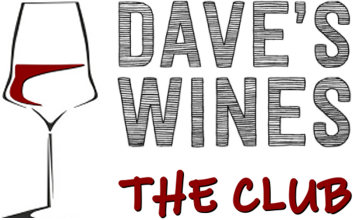




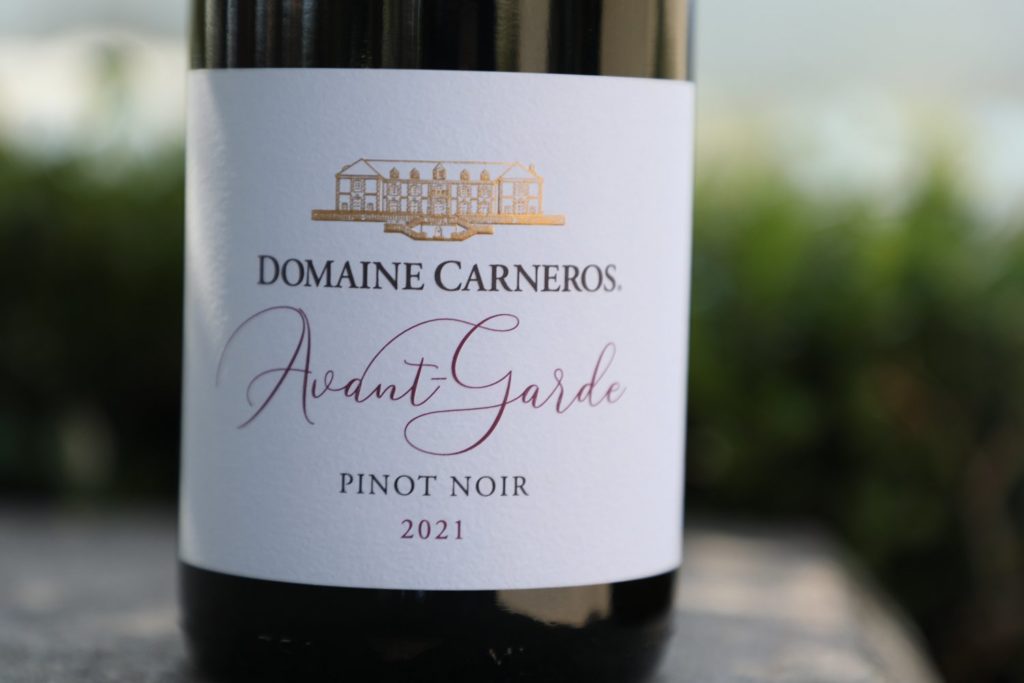
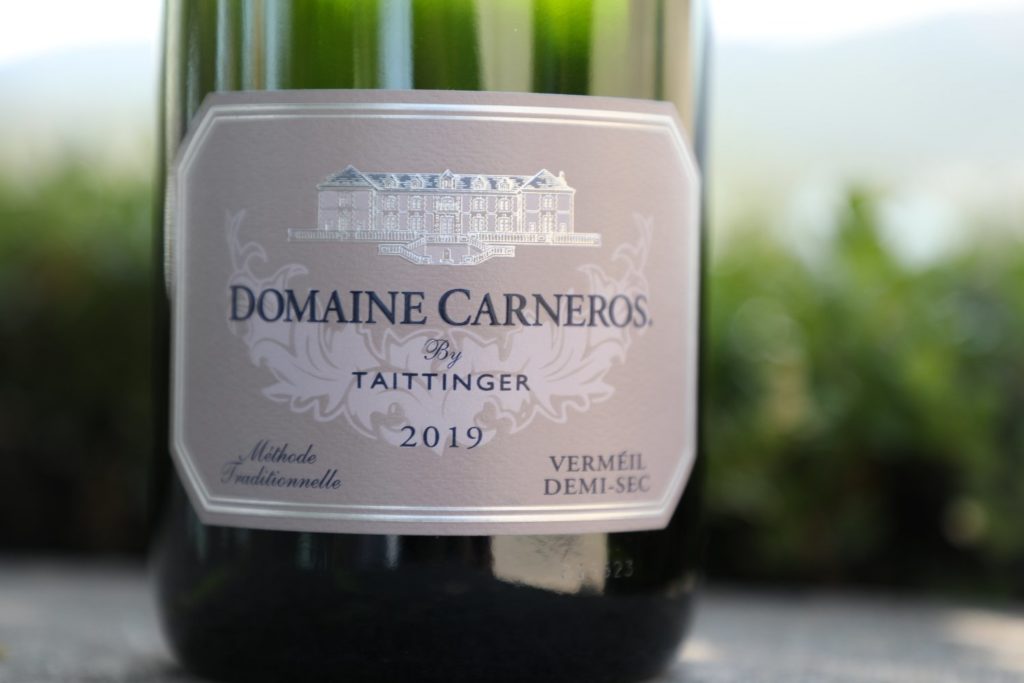
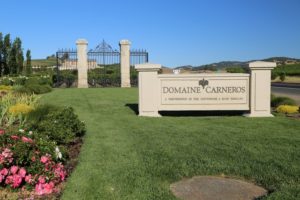
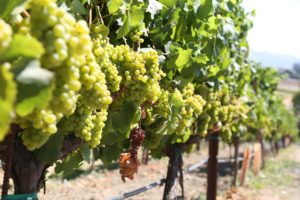
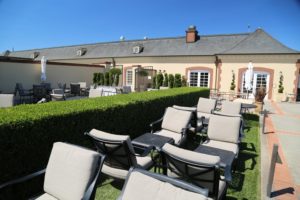
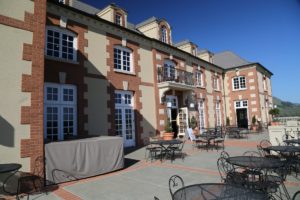
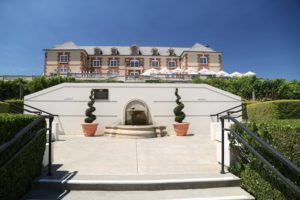
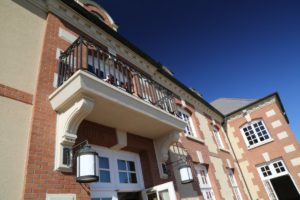
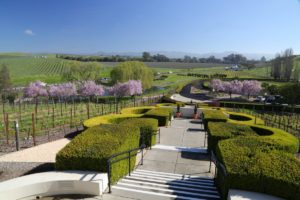
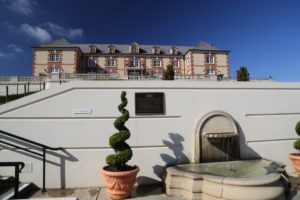
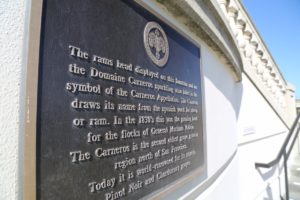
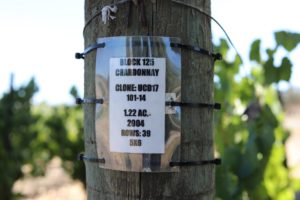
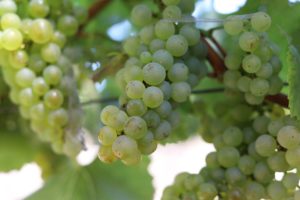
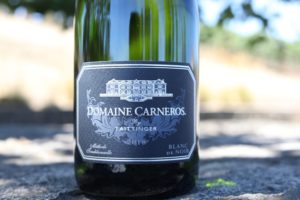
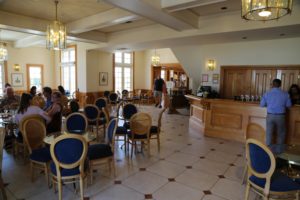
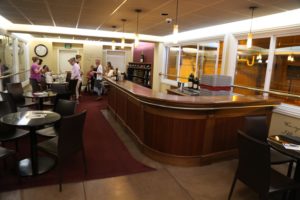
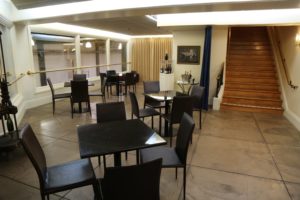
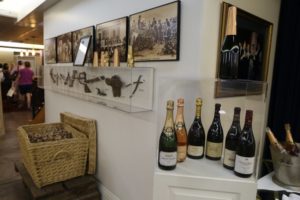
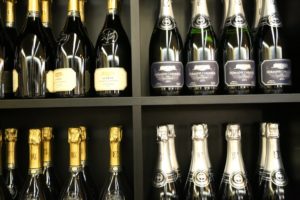
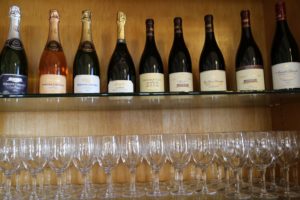
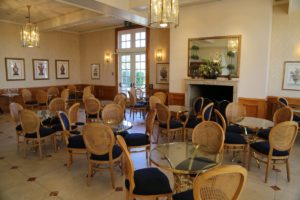
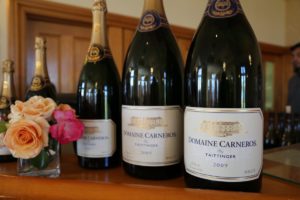
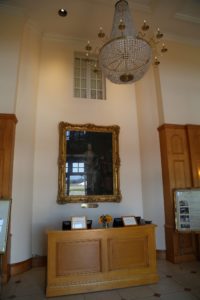
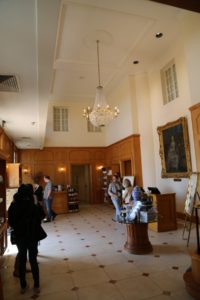
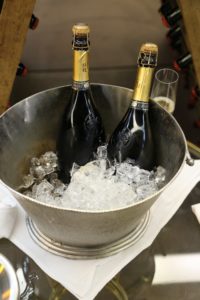
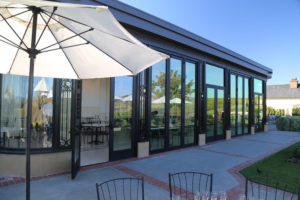
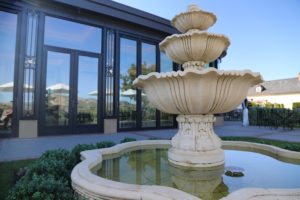
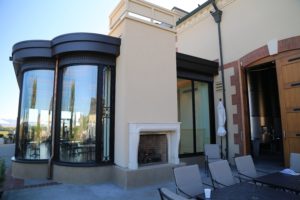
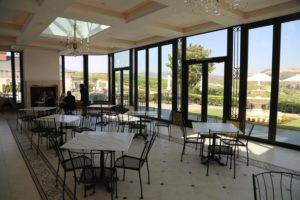


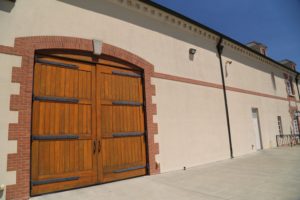
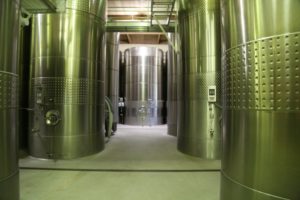
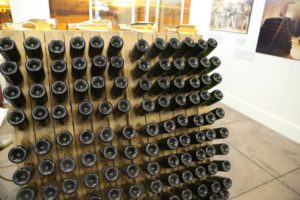
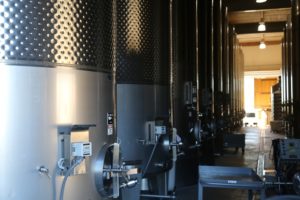
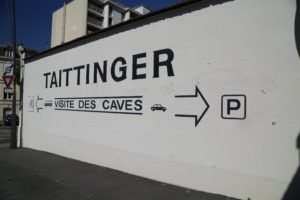
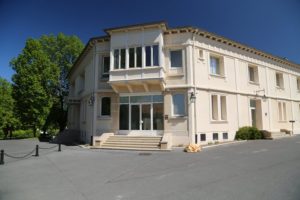
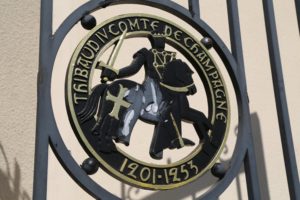
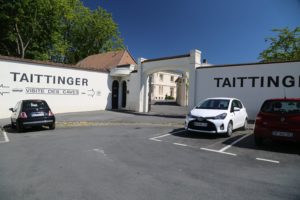

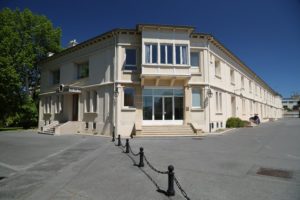
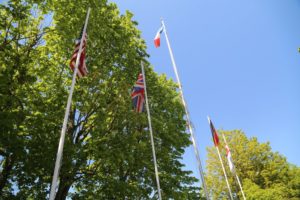
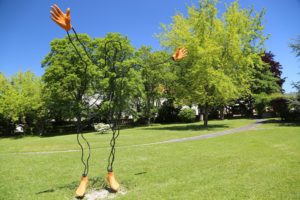
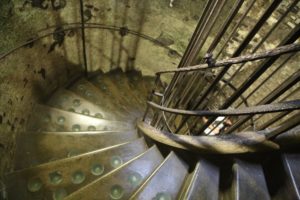
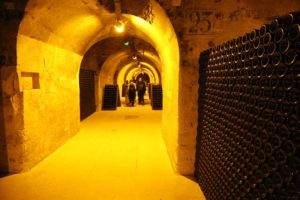
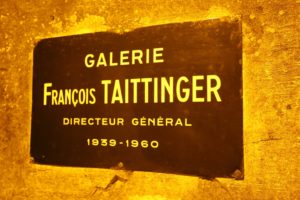
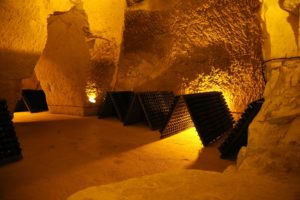
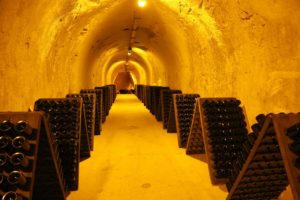
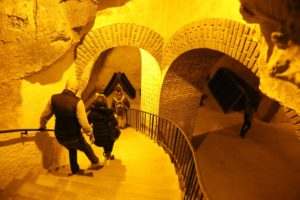
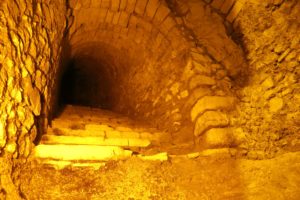
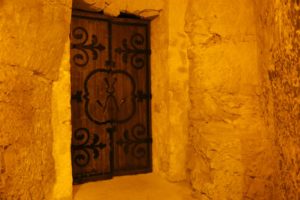
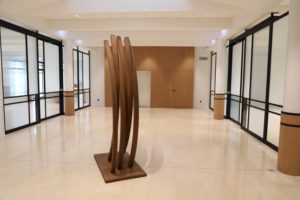
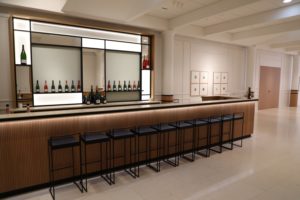
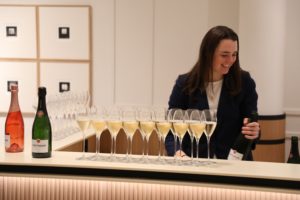
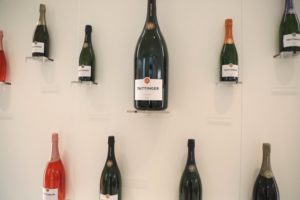
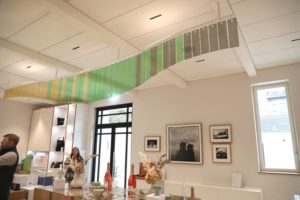

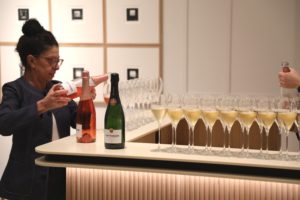
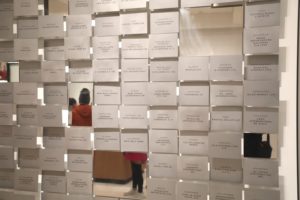
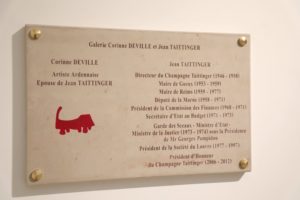

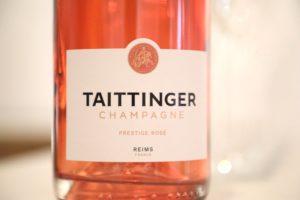
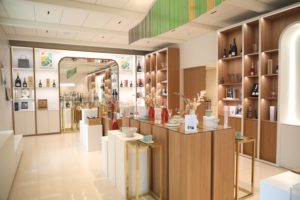
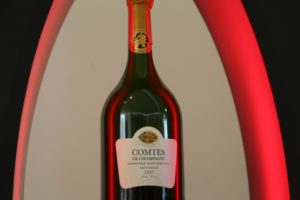
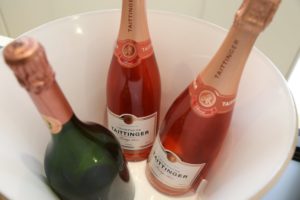
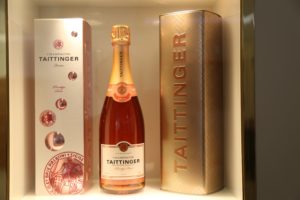
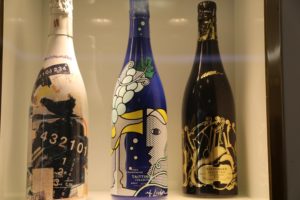
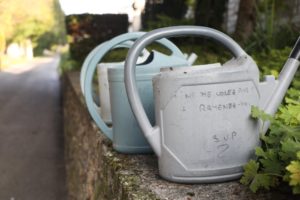
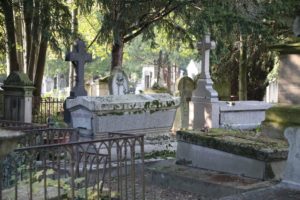
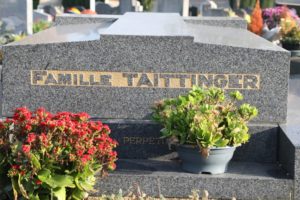
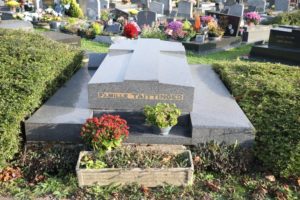



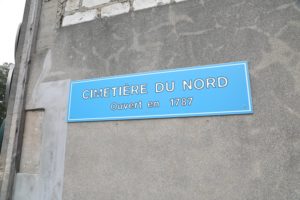
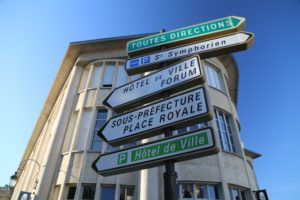
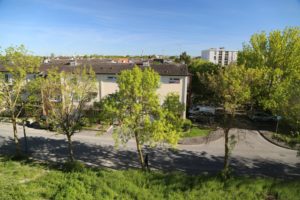


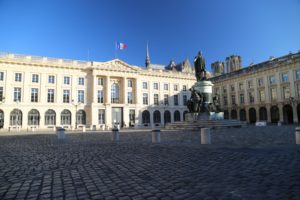
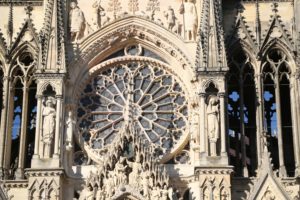
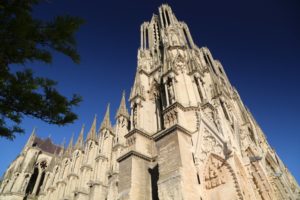
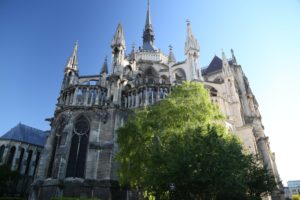
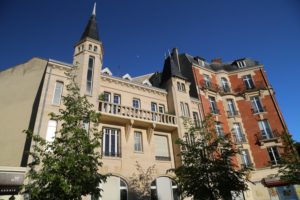
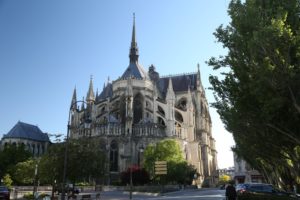
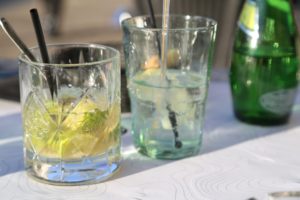
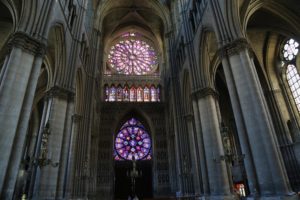
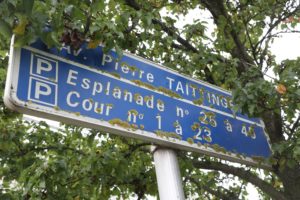


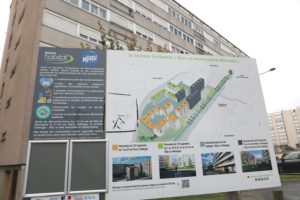

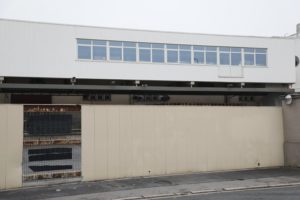
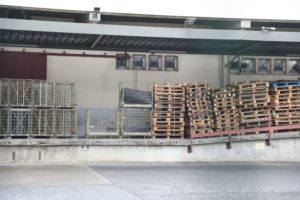
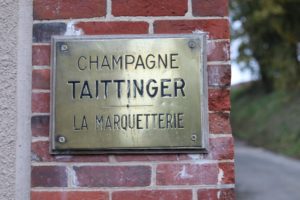
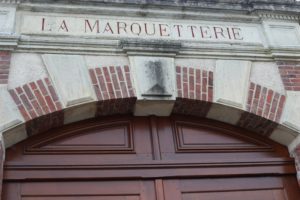
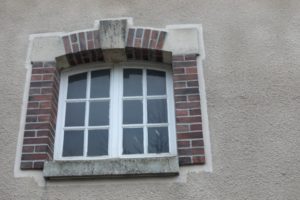
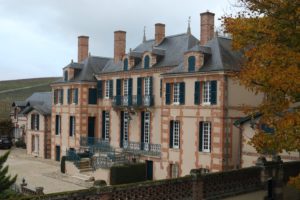
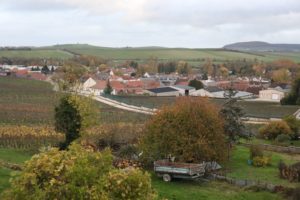
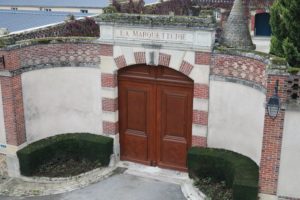
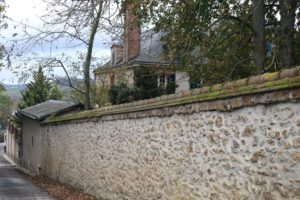
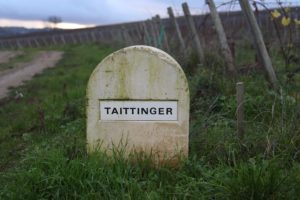
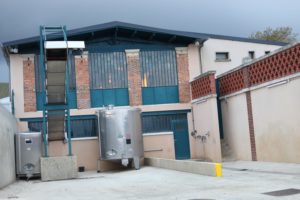
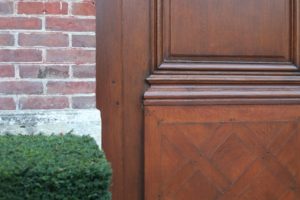
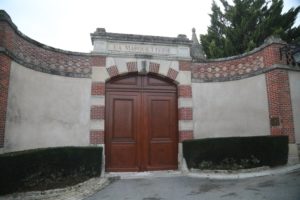
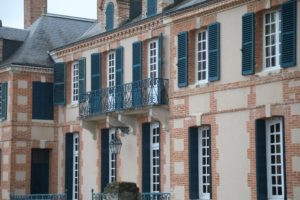
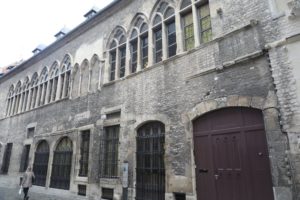
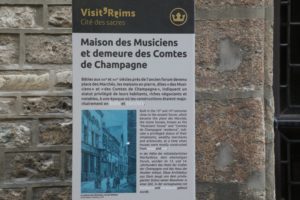
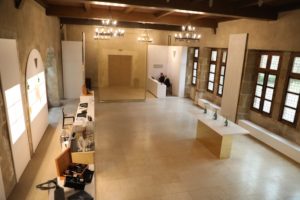
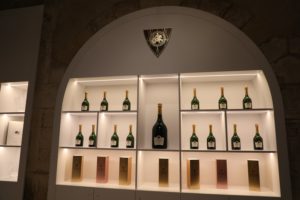
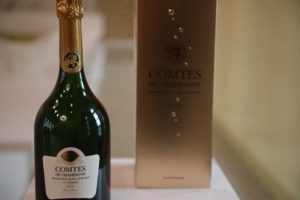
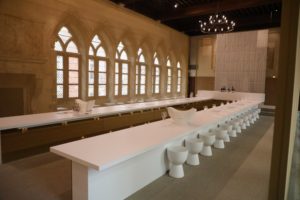

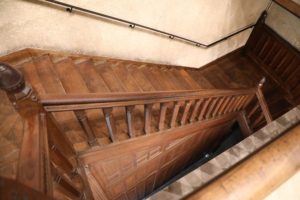
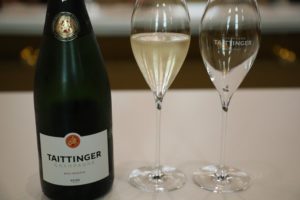
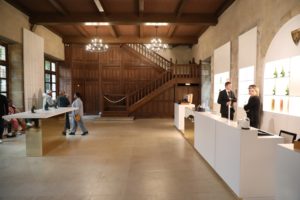
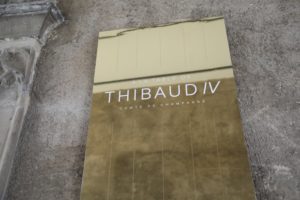
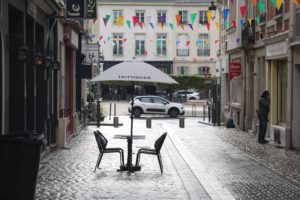




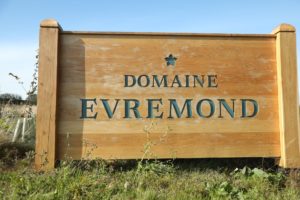
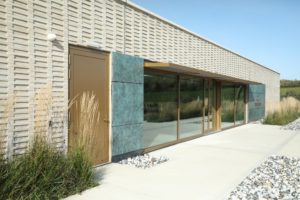
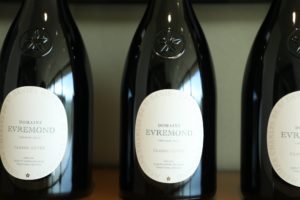
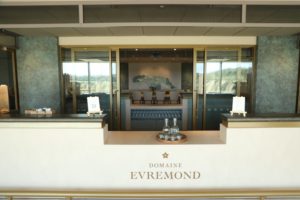
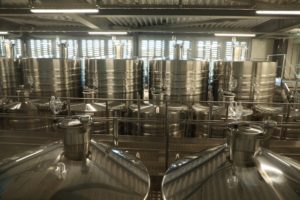
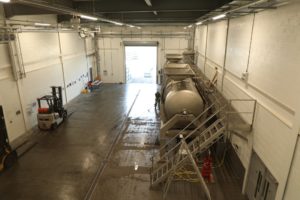
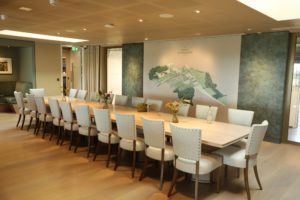
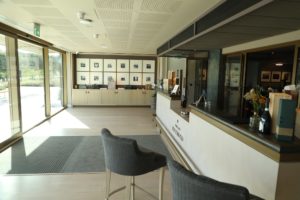
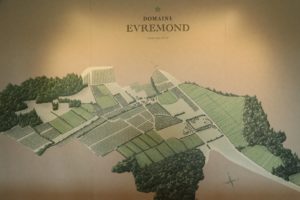
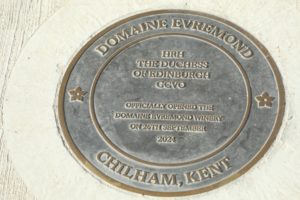
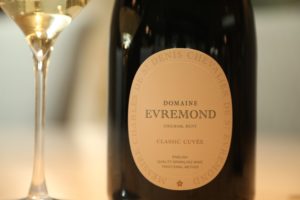
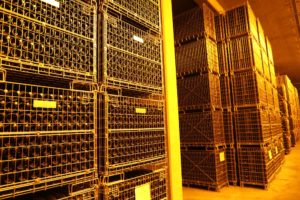
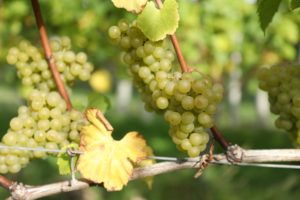
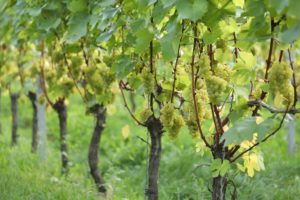
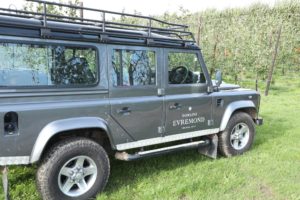
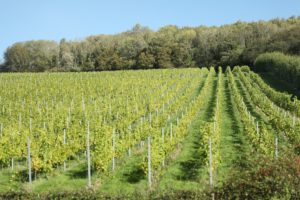
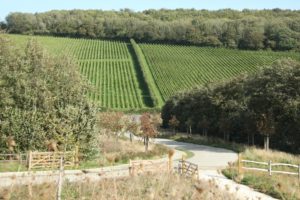
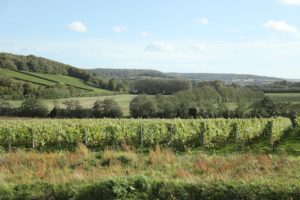
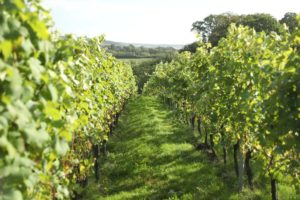
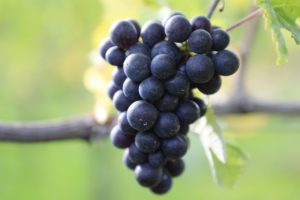
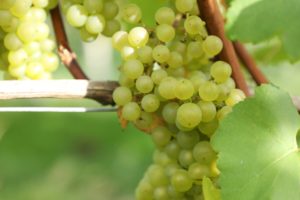
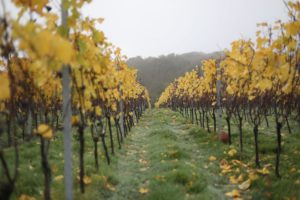
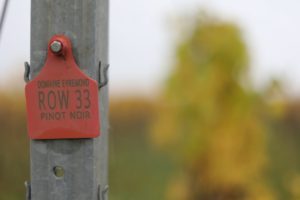
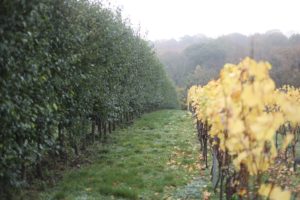
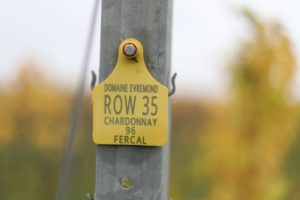
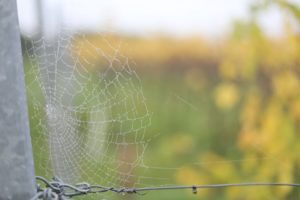
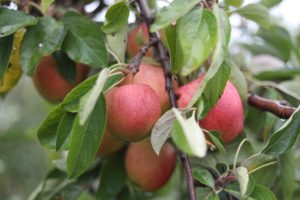

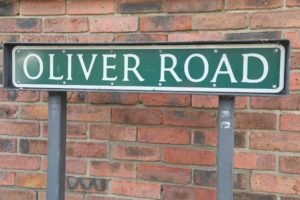
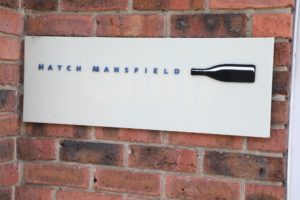


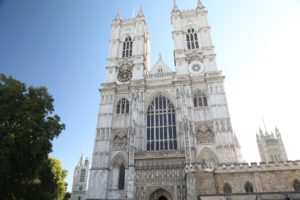
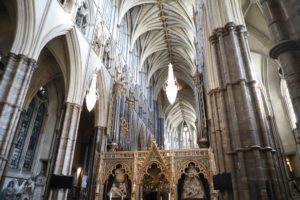


Leave a Reply